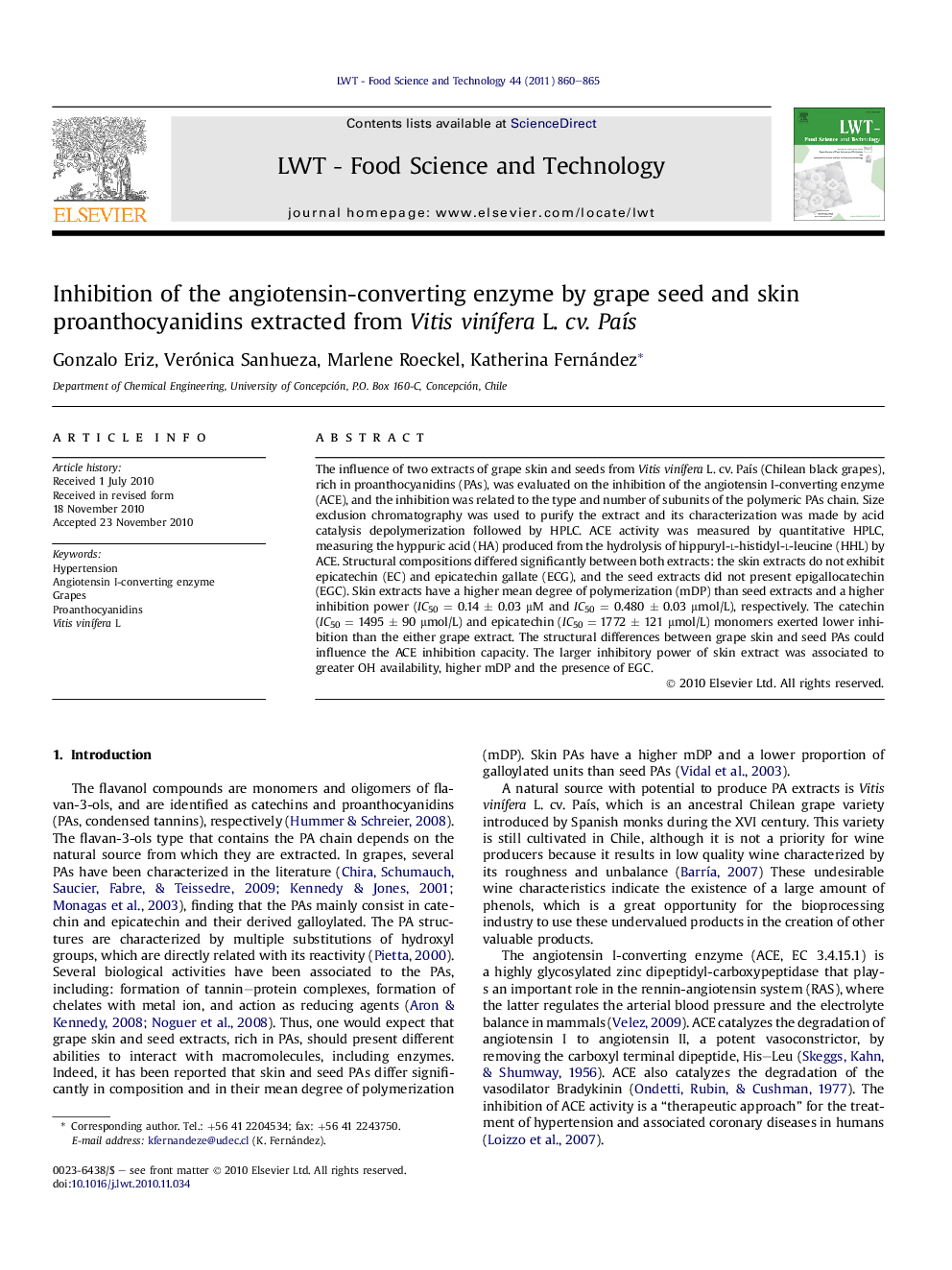| Article ID | Journal | Published Year | Pages | File Type |
|---|---|---|---|---|
| 4564336 | LWT - Food Science and Technology | 2011 | 6 Pages |
The influence of two extracts of grape skin and seeds from Vitis vinífera L. cv. País (Chilean black grapes), rich in proanthocyanidins (PAs), was evaluated on the inhibition of the angiotensin I-converting enzyme (ACE), and the inhibition was related to the type and number of subunits of the polymeric PAs chain. Size exclusion chromatography was used to purify the extract and its characterization was made by acid catalysis depolymerization followed by HPLC. ACE activity was measured by quantitative HPLC, measuring the hyppuric acid (HA) produced from the hydrolysis of hippuryl-l-histidyl-l-leucine (HHL) by ACE. Structural compositions differed significantly between both extracts: the skin extracts do not exhibit epicatechin (EC) and epicatechin gallate (ECG), and the seed extracts did not present epigallocatechin (EGC). Skin extracts have a higher mean degree of polymerization (mDP) than seed extracts and a higher inhibition power (IC50 = 0.14 ± 0.03 μM and IC50 = 0.480 ± 0.03 μmol/L), respectively. The catechin (IC50 = 1495 ± 90 μmol/L) and epicatechin (IC50 = 1772 ± 121 μmol/L) monomers exerted lower inhibition than the either grape extract. The structural differences between grape skin and seed PAs could influence the ACE inhibition capacity. The larger inhibitory power of skin extract was associated to greater OH availability, higher mDP and the presence of EGC.
